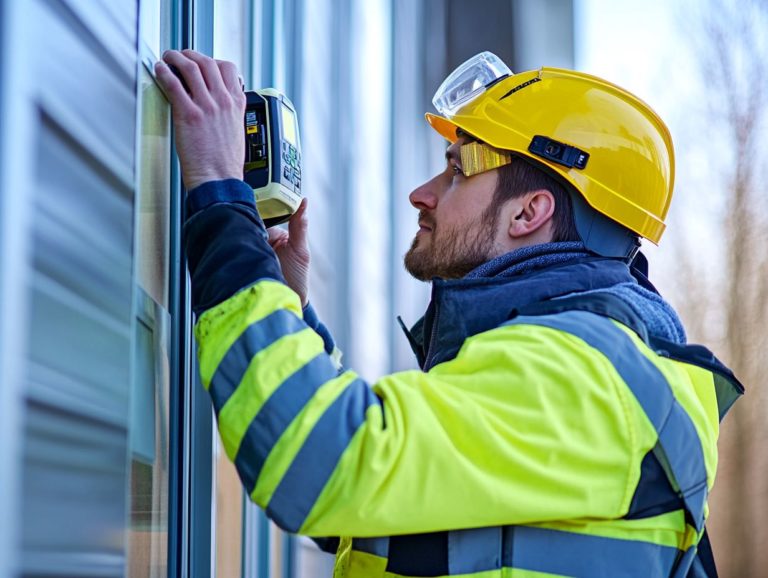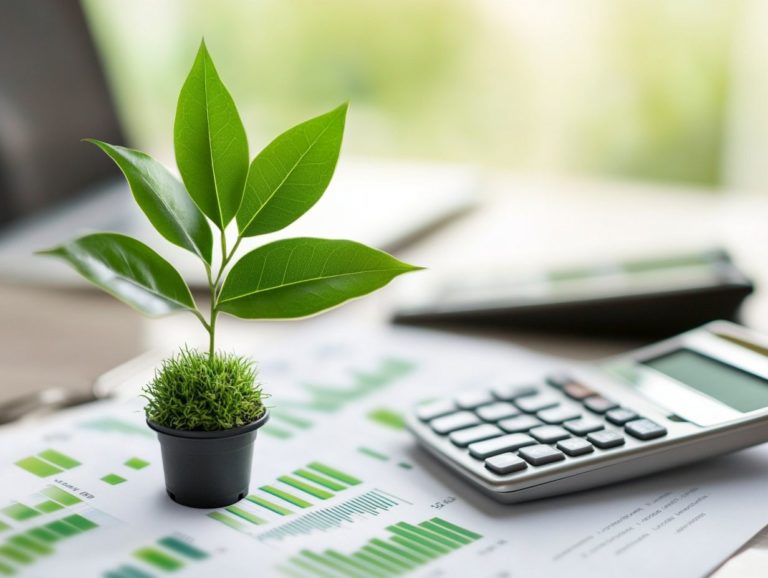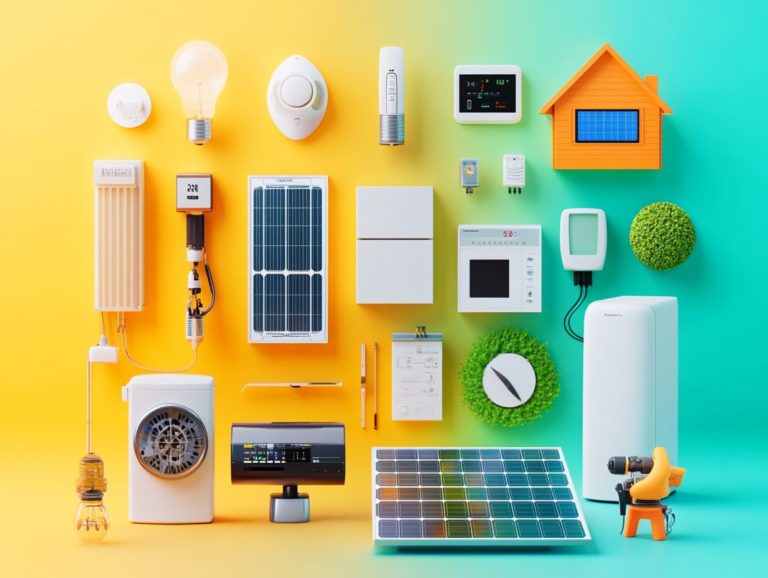How to Conduct an Energy Audit for Your Business
In today s world, energy efficiency is essential for enhancing your business operations. Understanding energy audits can be a game-changer.
An energy audit helps you see how energy is used, revealing opportunities for cost savings and environmental benefits.
Get ready to discover how to optimize your energy use! This article will guide you through energy audits from preparation to effective implementation.
Contents
- Key Takeaways:
- Understanding Energy Audits
- Benefits of Conducting an Energy Audit
- Preparing for an Energy Audit
- Conducting the Energy Audit
- Interpreting the Results
- Implementing Energy Efficient Solutions
- Preguntas Frecuentes
- Qu es una auditor a energ tica para un negocio y por qu es importante?
- Cu les son los pasos involucrados en la realizaci n de una auditor a energ tica para mi negocio?
- Necesito contratar a un profesional para realizar una auditor a energ tica para mi negocio?
- Cu les son algunas medidas comunes de ahorro energ tico que se pueden implementar despu s de una auditor a energ tica?
- Cu nto tiempo suele tardar en verse un retorno de la inversi n de las medidas de ahorro energ tico?
- Existen incentivos o programas gubernamentales disponibles para ayudar con el costo de realizar una auditor a energ tica?
Key Takeaways:
- Properly understanding energy audits is crucial for businesses looking to reduce costs and their environmental impact.
- The benefits of conducting an energy audit include significant cost savings and a positive effect on the environment.
- Before conducting an energy audit, businesses should prepare by gathering all necessary information and data.
Understanding Energy Audits
Understanding energy audits is essential for commercial buildings seeking to elevate energy efficiency and reduce energy consumption, especially when considering how to market your energy audit business.
An energy audit is a thorough assessment of your facility’s energy usage, analyzing energy systems, heating, ventilation, and air conditioning (HVAC) components, as well as the overall building design to enhance energy performance.
This process ensures compliance with regulations and helps develop action plans that effectively reduce carbon footprints while refining energy management strategies.
What is an Energy Audit?
An energy audit is your gateway to a deeper understanding of a building s energy systems. It hones in on consumption patterns and pinpoints opportunities for enhanced energy efficiency.
This assessment involves analyzing heating, cooling, lighting, ventilation, and other energy-related systems, revealing not just how energy is used, but also where it s being wasted.
Different types of energy audits cater to various needs; for example, a commercial energy audit focuses specifically on businesses, examining their operations and equipment for cost-saving measures.
Energy tracking software is crucial for this process, allowing you to monitor real-time energy usage and trends. This technology simplifies data collection, delivers valuable analytics, and enables organizations to implement recommendations effectively.
In this way, it plays a pivotal role in crafting a more sustainable and cost-efficient energy management strategy.
Benefits of Conducting an Energy Audit
Conducting an energy audit offers you numerous advantages. You’ll enjoy significant savings on your energy bills, experience improved energy efficiency, and learn how to make energy audits work for you, enhancing compliance with energy performance standards.
You ll also positively impact the environment by reducing your carbon footprint. It’s a win-win for both your finances and the planet.
Cost Savings and Environmental Impact
Implementing energy-saving measures identified through an energy audit can lead to substantial cost savings on your energy bills, while also helping to mitigate negative environmental impacts.
By tackling inefficiencies, you can optimize your energy consumption, ultimately lowering utility expenses and freeing up funds for other valuable investments.
Integrating renewable energy sources, such as solar panels or wind turbines, enhances these savings even further by reducing reliance on traditional power grids, which often face unpredictable price fluctuations.
Choosing cleaner energy solutions contributes to fewer greenhouse gas emissions, promoting a healthier planet.
As you and others embrace these sustainable practices, the collective reduction of carbon footprints creates a positive ripple effect, paving the way for a more eco-friendly future for generations to come.
Preparing for an Energy Audit
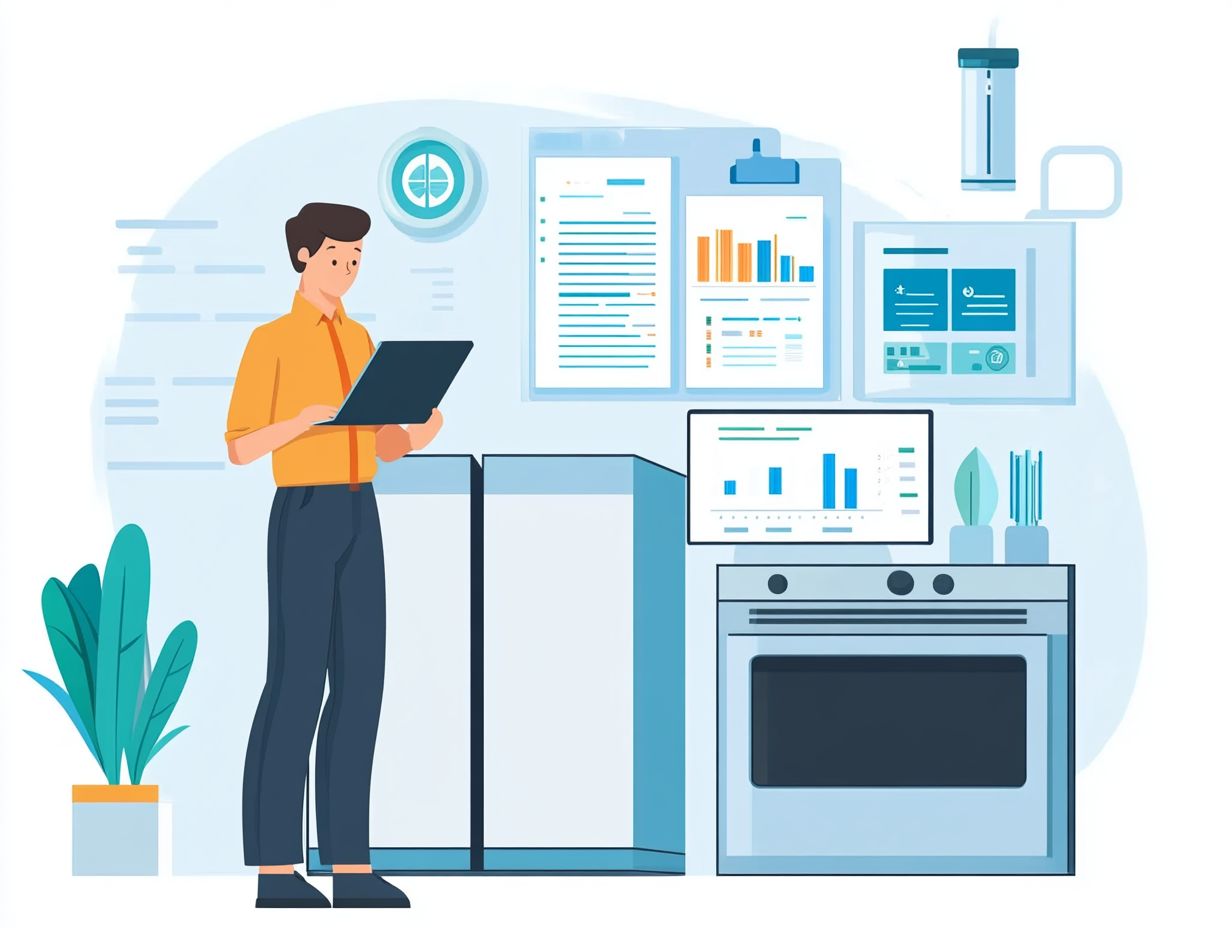
When preparing for an energy audit, it’s essential to compile a comprehensive checklist that captures critical energy consumption data.
You’ll want to gather information about energy usage across various systems, as well as insights into heating, ventilation, and air conditioning (HVAC) systems, to ensure a thorough and accurate assessment.
This careful planning is key to a successful audit. It allows you to identify opportunities for energy efficiency and optimization.
Gathering Necessary Information
Gathering the necessary information for an energy audit involves collecting your energy consumption data and utilizing a comprehensive energy audit checklist.
It’s essential to compile detailed energy bills from previous months. These documents provide valuable insights into your usage patterns and highlight peak consumption periods.
Previous energy inspections also hold significant importance; they can uncover inefficiencies or recurring issues that need addressing.
By compiling this information, you enable auditors to pinpoint areas that need improvement. This allows them to offer tailored recommendations that align with your specific energy consumption habits.
This approach enhances your energy management strategies and can lead to meaningful cost savings.
Conducting the Energy Audit
Conducting an energy audit requires a methodical approach, encompassing a series of carefully defined steps, including understanding how to conduct an energy audit on a budget.
You’ll engage in energy inspections, gather relevant data, and analyze energy metrics to evaluate performance and uncover consumption patterns.
This thorough process allows you to gain valuable insights into your energy use and identify areas for improvement.
Steps and Techniques
The process of conducting an energy audit encompasses several key steps:
- Initial assessments
- Data collection
- A detailed analysis of energy consumption
You’ll use various techniques and sophisticated energy management software to yield precise energy metrics.
Starting with a meticulous site evaluation allows you to pinpoint areas prone to energy loss. This includes a thorough examination of physical installations, from HVAC systems to the effectiveness of insulation.
Next, you’ll collect data using advanced monitoring tools that meticulously track electricity and water usage patterns.
Energy management solutions, including specialized software platforms, help you compile and interpret this data, culminating in comprehensive reports.
After the analysis, you ll establish benchmarks that compare your current performance to industry standards. This ensures you can implement targeted strategies aimed at optimization and continuous improvement.
Interpreting the Results
Interpreting the results of an energy audit is crucial for pinpointing areas ripe for improvement.
This insight enables you to implement energy-saving solutions and optimize your energy consumption patterns with precision.
Identifying Areas for Improvement

Identifying areas for improvement from your energy audit results is essential for crafting effective energy conservation strategies that enhance efficiency and open the door to potential upgrades.
The evaluation process is pivotal, involving a thorough examination of your current energy usage patterns to uncover hidden inefficiencies.
By meticulously assessing various systems like heating, cooling, and lighting you can discover practical insights that guide you towards effective changes.
These insights not only direct you towards necessary upgrades but also help pinpoint habits or practices that lead to energy waste.
As a result, you can prioritize your resources effectively, ensuring that the most impactful changes are made to promote sustainability and achieve significant cost savings over time.
Implementing Energy Efficient Solutions
Implementing energy-efficient solutions requires you to execute energy reduction projects informed by the insights from an energy audit.
Your focus will be on making energy upgrades and adopting effective energy-saving measures, all while carefully considering the associated costs.
Act now to see immediate benefits! Start optimizing your energy use for cost savings today!
Types of Solutions and Cost Considerations
Explore various energy efficiency solutions. These range from simple energy-saving measures to major improvements, each requiring careful cost analysis.
Options might include upgrading to energy-efficient appliances and LED lighting. You can also invest in advanced heating, ventilation, and air conditioning (HVAC) systems and quality insulation.
Assess the initial costs and potential long-term savings on your utility bills. Utilizing energy management tools can significantly streamline this process.
These tools enable you to monitor consumption patterns, pinpoint inefficiencies, and craft tailored plans for reducing energy use.
By thoughtfully integrating these solutions, you can maximize savings while aligning with your environmental goals. Take control of your energy bills today!
Preguntas Frecuentes
Qu es una auditor a energ tica para un negocio y por qu es importante?
Una auditor a energ tica revisa c mo se usa la energ a en un negocio. Es importante identificar reas de desperdicio de energ a e implementar soluciones para ahorrar dinero y reducir el impacto ambiental.
Cu les son los pasos involucrados en la realizaci n de una auditor a energ tica para mi negocio?
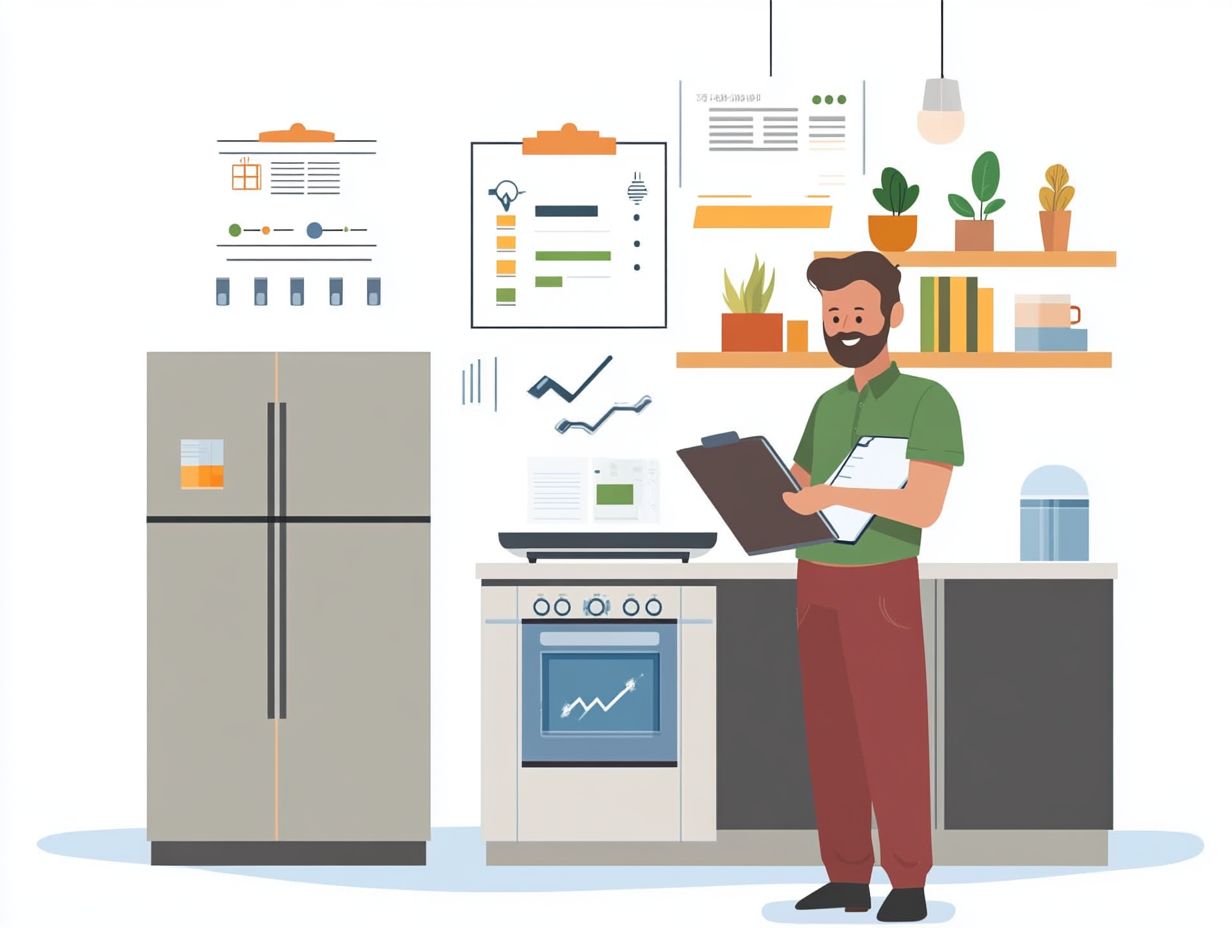
El primer paso es recopilar datos sobre el uso y costos de energ a. Luego, inspecciona todas las reas de tu negocio que utilizan energ a, como la iluminaci n, los sistemas de HVAC y el equipo.
A continuaci n, analiza tus hallazgos e identifica reas de mejora. Finalmente, crea un plan de acci n e implementa medidas de ahorro energ tico.
Necesito contratar a un profesional para realizar una auditor a energ tica para mi negocio?
Si bien no es obligatorio, contratar a un auditor energ tico puede proporcionar resultados m s completos y detallados. Ellos tienen el conocimiento y las herramientas para realizar una auditor a exhaustiva y hacer recomendaciones precisas.
Cu les son algunas medidas comunes de ahorro energ tico que se pueden implementar despu s de una auditor a energ tica?
Existen muchas medidas potenciales de ahorro energ tico que se pueden implementar, como la instalaci n de iluminaci n eficiente, la actualizaci n a equipos eficientes, la mejora del aislamiento y la implementaci n de sistemas de gesti n energ tica.
Cu nto tiempo suele tardar en verse un retorno de la inversi n de las medidas de ahorro energ tico?
El tiempo para ver un retorno de la inversi n puede variar. Sin embargo, la mayor a de los negocios ven un retorno dentro de 1 a 3 a os. Es importante monitorear y rastrear regularmente el uso de energ a para medir con precisi n los ahorros.
Existen incentivos o programas gubernamentales disponibles para ayudar con el costo de realizar una auditor a energ tica?
S , muchos gobiernos ofrecen incentivos y programas para ayudar a los negocios con el costo de realizar una auditor a energ tica. Vale la pena investigar y solicitar estos programas para compensar la inversi n inicial.

